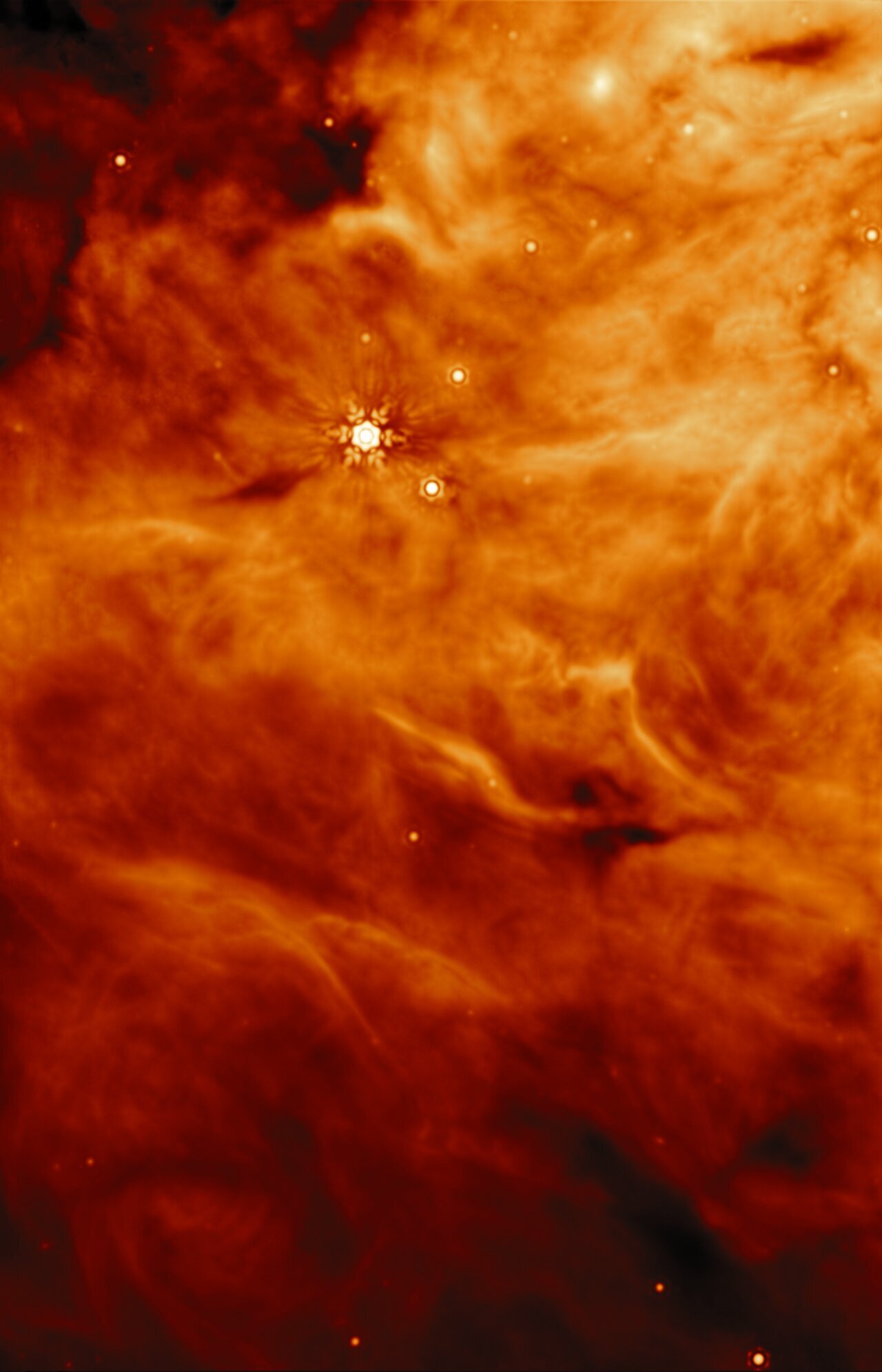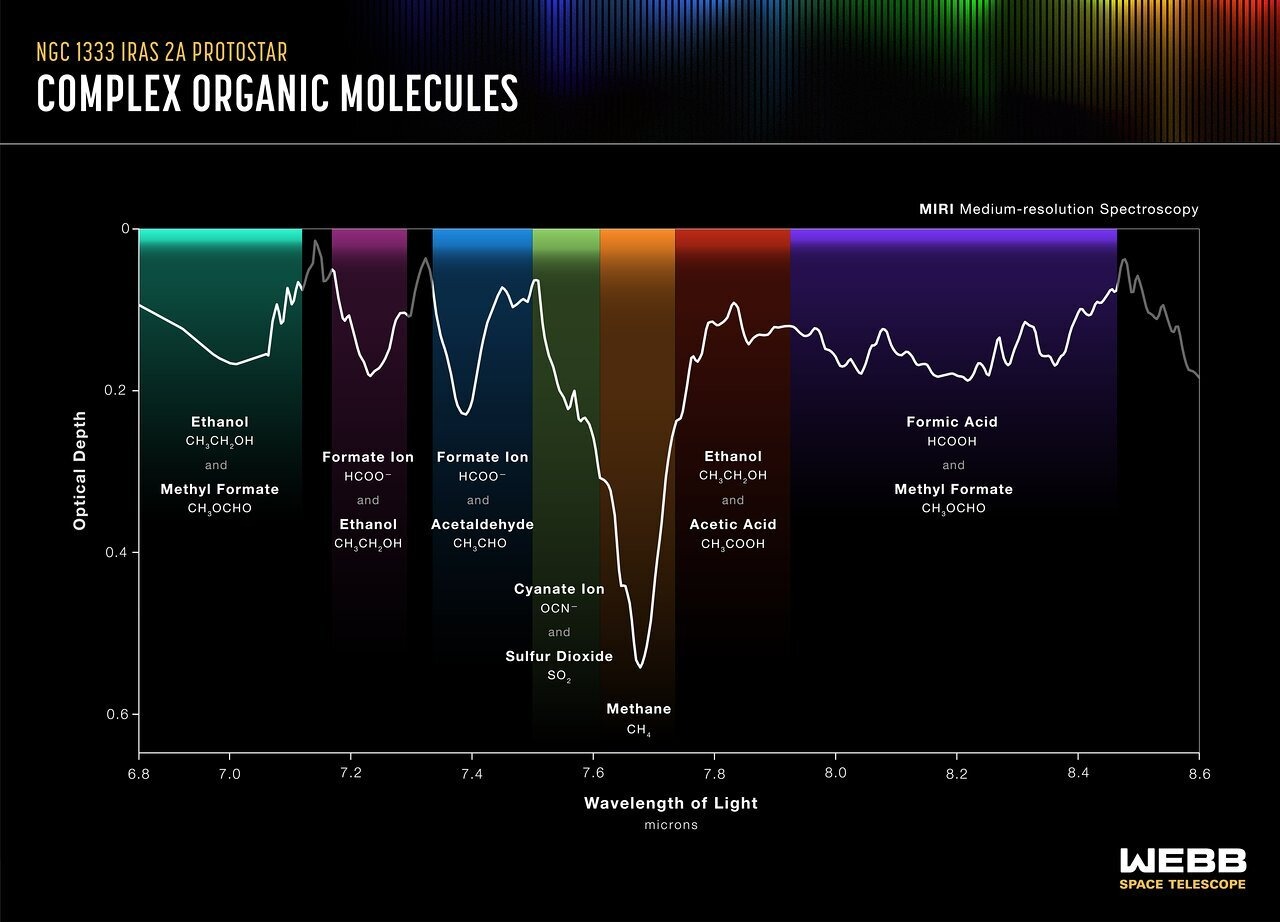The international astronomical team, using the NASA/ESA/CSA James Webb Space Telescope (JWST), discovered organic molecules in protostars at the initial stages of their formation. They turned out to be from simple molecules, such as methane, to complex compounds such as acetic acid and ethanol. These findings are key to understanding the formation of exoplanets with the possible origin of life on them.

The first prediction about complex organic molecules in protostars was made decades ago based on laboratory experiments. But it was very difficult to detect such molecules due to the lack of high-quality instruments at that time. The James Webb Telescope’s Early Release Science Ice Age program has detected ice in the darkest and coldest regions of molecular clouds.
New observations made using the Mid-infrared Instrument on board the JWST (MIRI) as part of the JOYS+ program have made it possible to identify and confirm these organic molecules in interstellar clouds. Among them are acetaldehyde, ethanol, methyl formate and acetic acid.
Astronomers believe that these molecules may originate from the sublimation of ice — the transition directly from a solid state to a gas state. This provides new perspectives for understanding the origin of organic compounds in space. The study also revealed the presence of other molecules such as methane, formic acid, sulfur dioxide and formaldehyde. Some of them are important for biochemical processes. Negative ions were also found. They are part of the salts that are crucial for the development of further chemical complexity at higher temperatures. This indicates that interstellar ice may be much more complex and requires further research.

Of particular interest is the protostar IRAS 2A, which may have similarities with our Solar System in the early stages of its formation. Scientists are amazed at how James Webb has given them the opportunity to explore the complex chemical composition of the first stages of the development of planetary systems. All these studies indicate that ice in interstellar objects may be much more complex than previously thought, which opens up new prospects for the study of astrochemistry.
New research also confirms that organic molecules found in interstellar ice can fall on forming planets as part of comets or asteroids, which can stimulate the formation of life. All this underlines the importance of further research in this direction, which promises to receive even more important data in the coming years.
Earlier, we reported that a disinfectant was found near the center of the Milky Way.
According to NASA
Follow us on Twitter to get the most interesting space news in time
https://twitter.comne/ust_magazine


